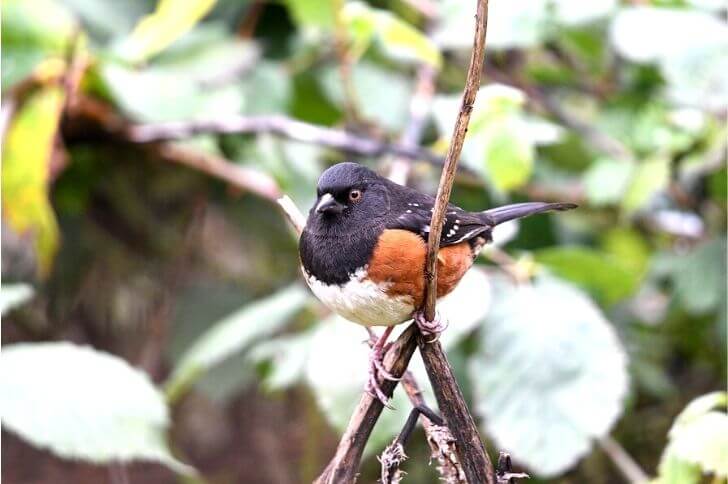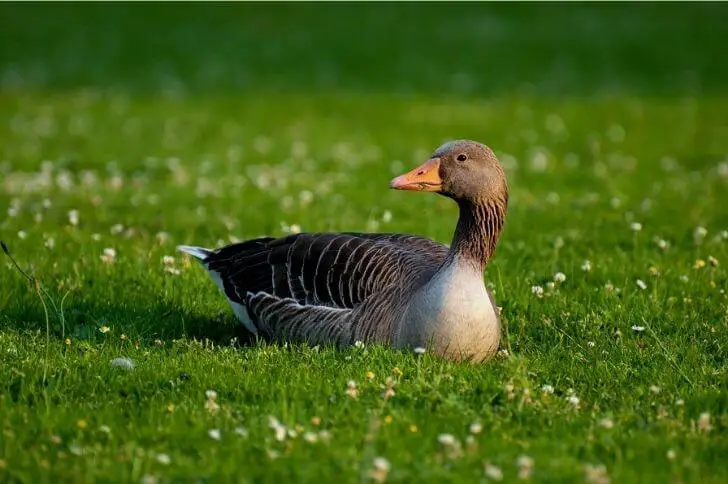Did you spot a small bird with red head fluttering around your backyard and found yourself curious about its name and species?
Figuring out the identity of small birds with red heads can prove to be a rather challenging task, given the diverse variety of species fitting this description that grace North America with their presence.
To help you figure out what bird you may have spotted, we will explore in this article, the world of small birds with red heads, delving into all the diminutive, crimson-crowned species that inhabit North America.
Most Popular Small Birds With Red Heads
Several small birds boast a distinctive red head. Here are the 5 most popular types of small birds with red heads:
- Northern Cardinal, a beloved favorite, features a striking red color across its entire body, head included.
- Purple Finch, small songbird that has a raspberry colored coating.
- Red-headed Woodpecker lives up to its name with a head entirely coated in bright red.
- Scarlet Tanager, a small bird with a red face and black wing tips.
- House Finch sports a red head and breast, their intensity varying depending on their diet. These are just a few examples of the small birds with red heads that you may encounter.
Northern Cardinal: #1 Most Popular Small Bird with Red Heads
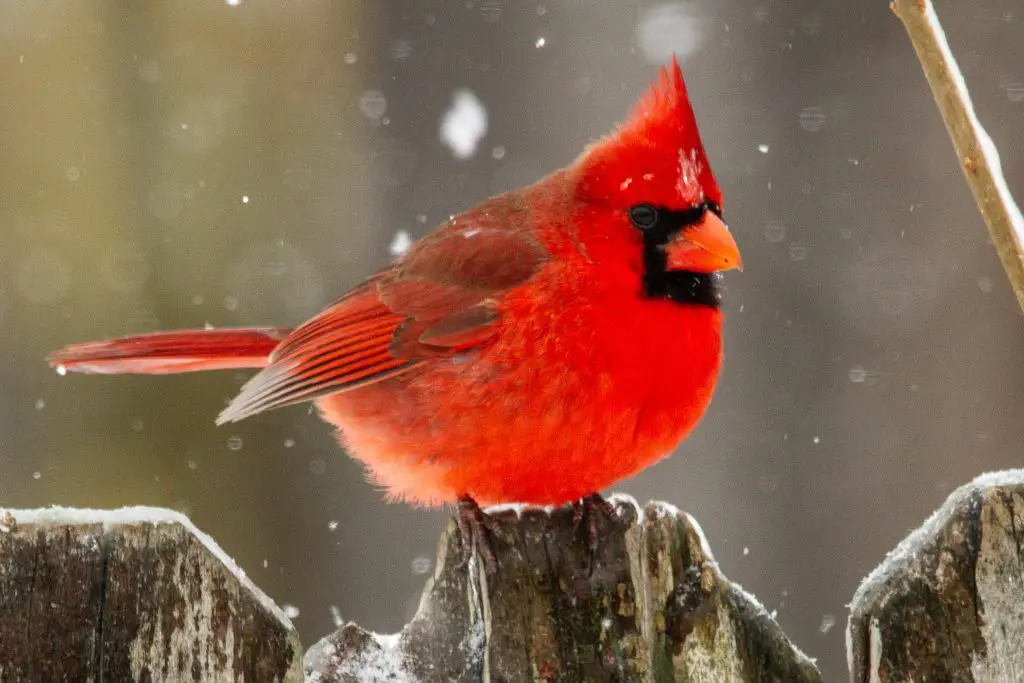
One of the most popular small birds with a red head that people most often find in their backyard is a Northern Cardinal. If it has a red head, then chances are its a male, as the female Norther Cardinal has more of a brown look to them.
The male Northern Cardinal, a small bird with a red head, is potentially the species that inspires the most people to delve into a field guide. Their distinct blend of familiarity, visibility, and fashion presents a shade of red that is utterly captivating. Even the brown females don a sharp crest adorned with warm red accents. As a small bird with a red head, the Northern Cardinal’s brilliance isn’t seasonal – they don’t migrate nor molt into dull plumage, so their breathtaking beauty graces snowy winter backyards. In the summer, their sweet melodies are often the day’s opening chorus, making them a beloved sight and sound year-round.
Purple Finch
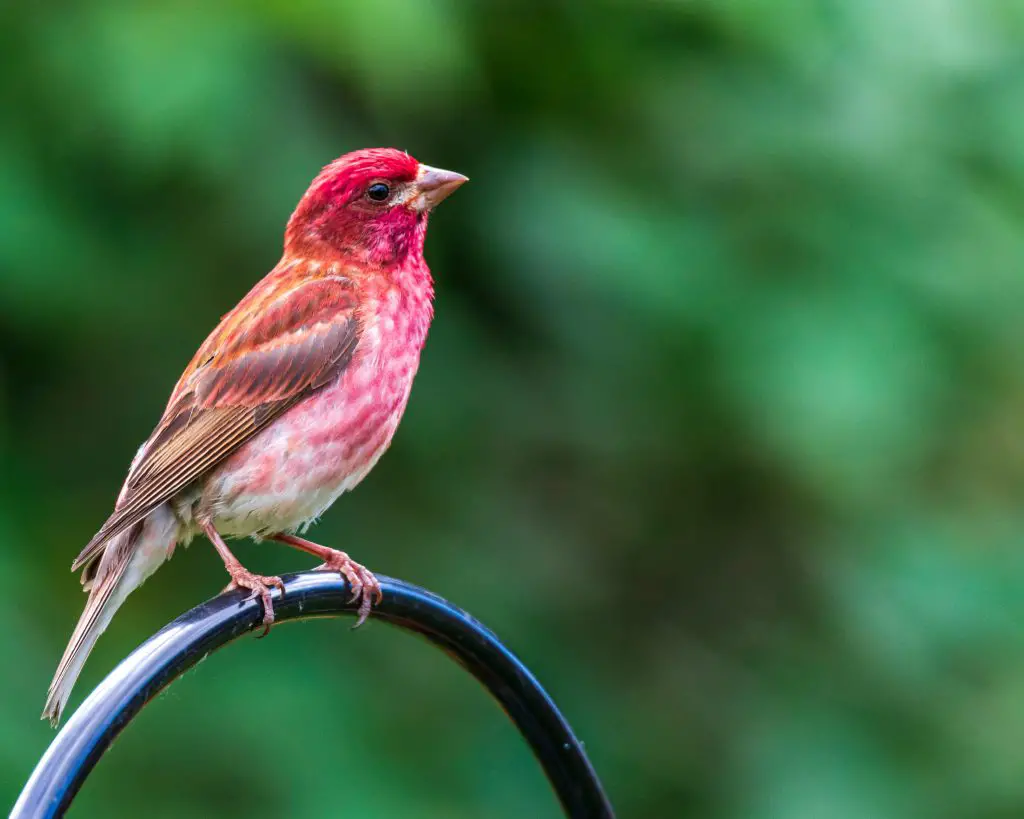
Male Purple Finches, another example of a small bird with a red head, exhibit a delicate pink-red hue on their head and breast, which blends seamlessly with their brown back and cloudy white belly. Their red-toned heads stand in stark contrast to the females, who lack any red coloring. The females, instead, are marked by coarse streaks below, featuring pronounced facial markings that include a whitish eye stripe and a dark line tracing down the side of their throat. This stunning dichotomy between male and female coloration further highlights the unique charm of these small birds with red heads.
Red-headed Woodpecker
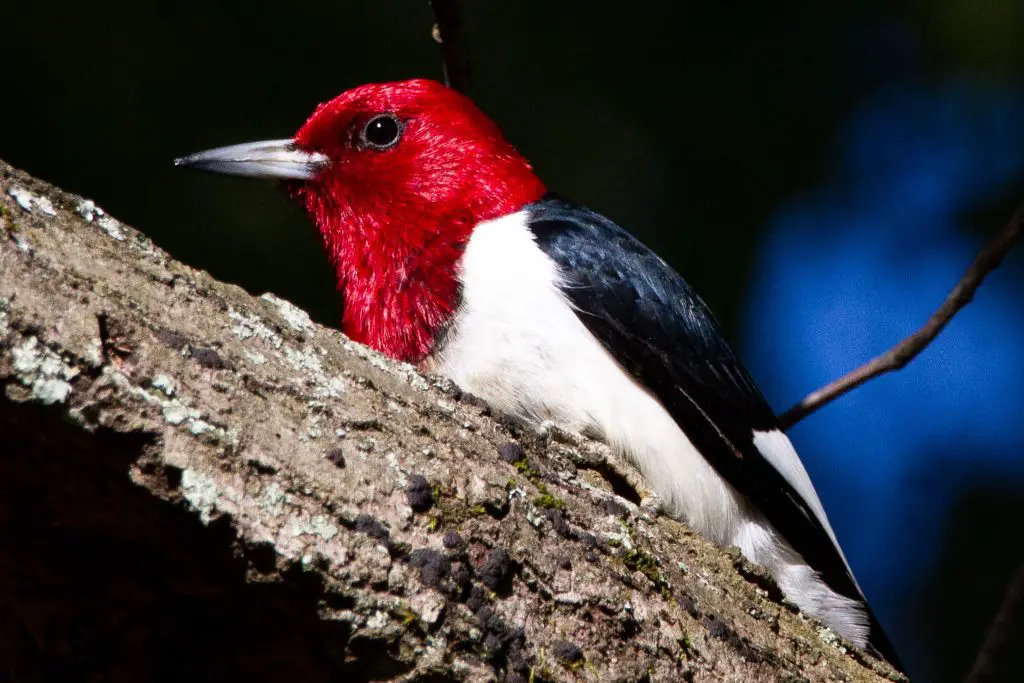
Are you hearings or seeing a bird pecking away at a tree in your backyard?
The Red-headed Woodpecker, another notable small bird with a red head, is a medium-sized species that measures approximately 20 centimeters in length. It’s instantly identifiable by its vibrantly red head, neck, and breast, contrasted by the black and white hues of its body — predominantly white underneath and black on top.
Equipped with a robust bill, this woodpecker excels at boring into wood to seek out insects, its primary food source during the summer months. When winter arrives, its diet shifts to nuts.
These small birds with red heads often display remarkable site fidelity, with adults frequently returning to the same nesting site year after year. Nesting season, typically between May and June, sees the females laying three to seven eggs. Both parents share the responsibility of incubating the eggs and caring for their offspring, further demonstrating the intriguing behavior of these small birds with red heads.
Scarlet Tanager
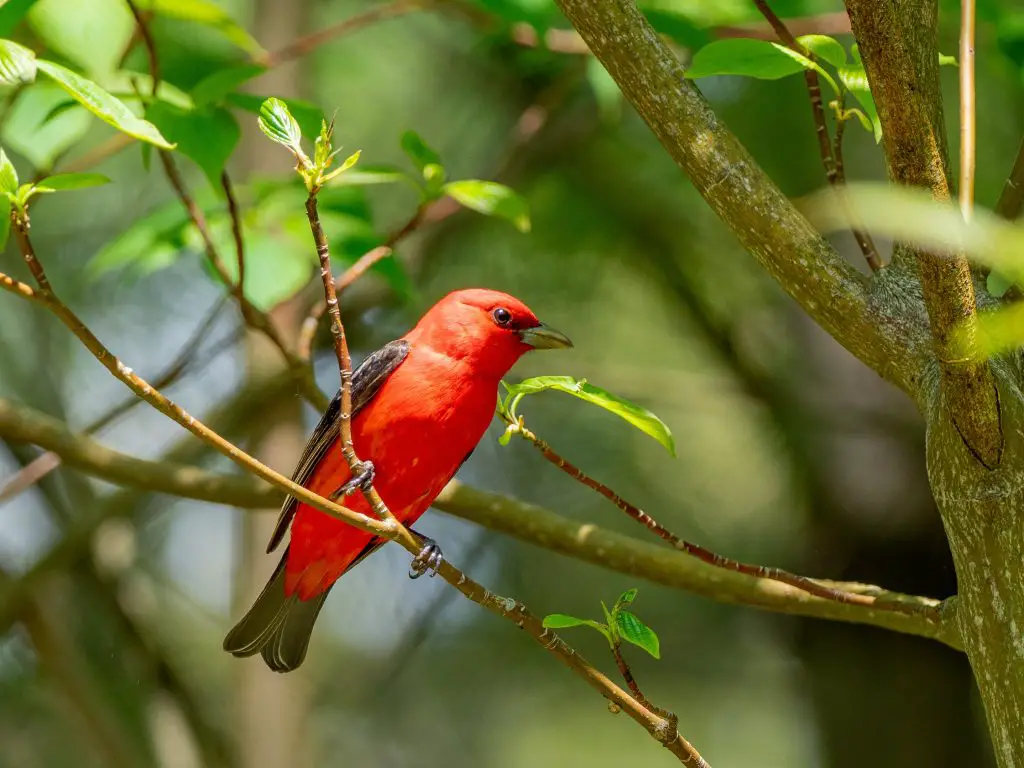
The Scarlet Tanager, a small bird with red head, offers a tropical aesthetic due to the males’ striking scarlet plumage, a brilliant contrast against their coal-black wings and tail feathers.
The females, however, aren’t as bight as the male counterpart, presenting as more of a pale yellow bird.
A summer visitor to North America, this small bird with a red head migrates to Central and South America for the winter months. Both males and females vocalize similar songs to mark and defend their territory against intruding Tanagers.
Preferring warmer climes, these birds make their appearance late in spring and depart early in fall. During these seasons, Scarlet Tanagers originating from Canada can be observed journeying through North America.
In their dietary habits, Scarlet Tanagers are insectivores, feasting on spiders and flying insects, including bees and wasps, high within tree canopies.
As summer wanes, their diet broadens to include berries such as blackberries, strawberries, raspberries, juneberries, and mulberries. Planting these species in your garden is an excellent strategy to attract these small birds with red heads.
House Finch
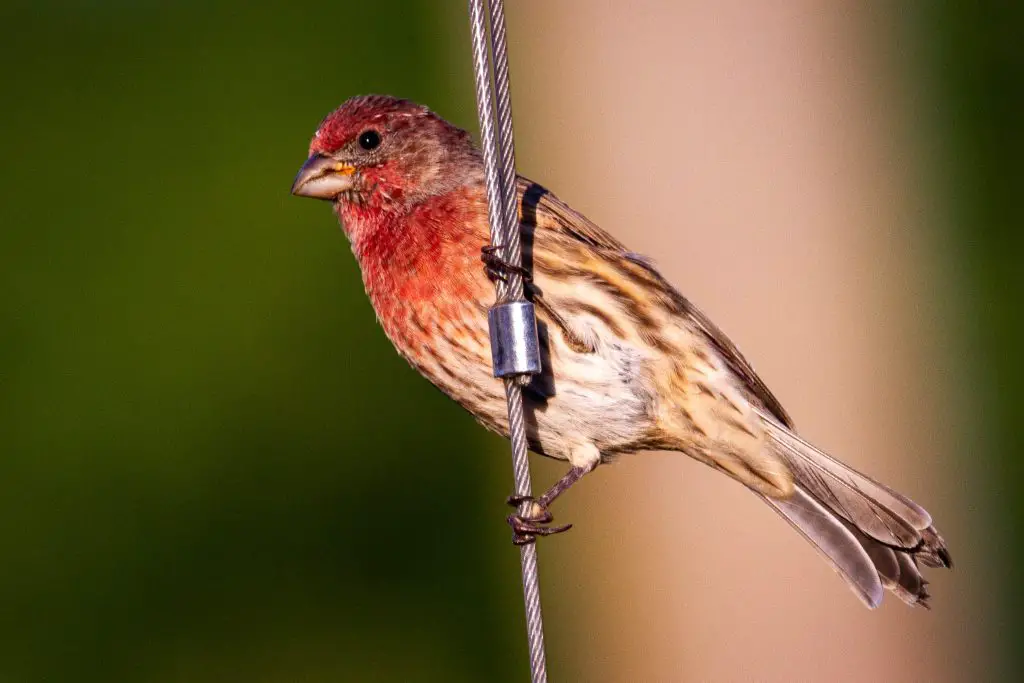
The House Finch, a captivating example of a small bird with a red head, is primarily found across North America. It’s a bird that is comfortable around humans, frequently spotted in urban parks, backyards, and forest edges. The adult males are distinguished by their rosy red faces and upper breasts, and the intensity of this red color can vary, often influenced by the bird’s diet.
The House Finch’s song is a joyous, warbling cascade of notes, contributing to the pleasant soundtrack of suburban neighborhoods. House Finches primarily feed on seeds, buds, and fruits, with sunflower seeds being a particular favorite.
In terms of breeding, House Finches are monogamous and the female is responsible for building the nest. The nest is often built in cavities, including man-made structures such as building ledges and lamp posts. From late April through August, females typically lay about four to five eggs, which they incubate for nearly two weeks. Both parents feed the chicks for another two weeks until they are ready to leave the nest.
Adding plants such as dandelions, chickweed, and sunflowers in your garden can attract these small birds with red heads, bringing their vibrant charm closer to home. In the wild, they can also help control weed populations by feeding on the seeds.
